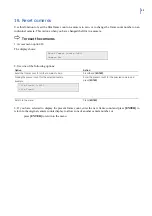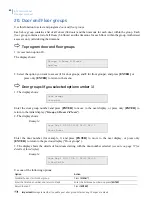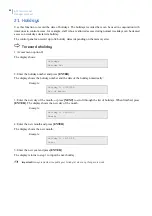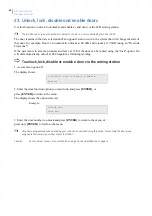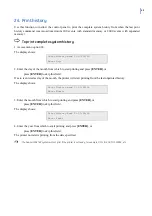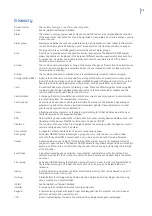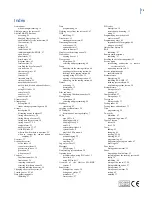
73
Glossary
Access control
The control of entry to, or exit from, a security area.
Active See
Normal/Active/Tamper/Inhibited
Alarm
The state of a security system when a device connected to a zone is activated and the condition
of the area is such that activation should be signalled. For example, a door lock is broken, causing
a siren to sound.
Alarm group
Alarm groups define the options available to users, arming stations or door reader to allow alarm
control. Alarm groups are defined by a set of areas, alarm control functions and menu options.
Zone types for area control (key switches) also make use of alarm groups.
Area
A section of a premise, which has specific security requirements. The Advisor MASTER system
allows any premise to be divided into 16 areas of different security requirements. Each area has
its own zones. A number and a name identify each area. For example, Area 1 Office, Area 2
Workshop, Area 3 Boardroom, etc.
Armed
The condition of an area where a change in the status of any zone (from normal to active) causes
an alarm. An area or premise is only armed when it is unoccupied. Some zones (like vaults) can
remain armed continually.
Armed
The condition of an area or premise when it is armed (security turned on) and unoccupied.
Arming stations (RAS)
A device that is the user’s control panel for security functions for an area(s) or for access points
(doors). The arming station can be an Advisor MASTER keypad (LCD keypad, reader) or any other
device that can be used to perform security function, such as arm/disarm, open doors, etc.
Card
A credit card size piece of plastic containing a code. There are different type of cards, using bar
coding, magnetic stripes, wireless media and others. Cards are presented at readers and the
code is used to identify users (similar to a PIN code)
Central station
A company that monitors whether an alarm has occurred in a security system. A central station
is located away from the premise/area it monitors.
Control panel
An electronic device that is used to gather all data from zones on the premises. Depending on
programming and status of areas, it will generate alarm signals. If required, alarms and other
events can be reported to a central station.
Cursor
A flashing underline character on the liquid crystal display (LCD) that indicates where the next
character entered on the keypad will appear.
DGP
Data Gathering Panel. A device that collects data from other security devices within an area, and
transfers it to the Advisor MASTER control panel or 4-door/4-lift DGP.
Disarmed
The condition of an area when it is occupied and when the security system has been set so that
normal activity does not set off an alarm.
Door contact
A magnetic contact used to detect if a door or window is opened.
Door group
An Advisor MASTER feature that assigns a group of doors or lifts to a user, in order to allow
access to those doors/lifts. Access to each door in a group can be restricted via a timezone.
Duress
A situation where a user is being forced to breach the system security (for example, forced at
gunpoint to open the door). The Advisor MASTER duress facility allows a signal to be activated (for
example, notification to a central station) by the user. This is done by incrementing the last digit
of the PIN code.
Event flags
A signal activated by a zone condition, area condition, system status or fault condition, door
command (on doors 1 to 16) or shunt condition. The main purpose of an event flag is to activate
an output.
Floor group
An Advisor MASTER feature that assigns a group of floors to a user, in order to allow selection of
floors when accessing a lift reader. Access to each floor in a group can be restricted via a
timezone.
History
A list of past alarm and access control events stored in memory that can be viewed on an LCD
arming station or sent to a printer.
Hold-up
A (silent) alarm that is triggered by a hold-up button. Normally it will not trigger any siren, only
send a message to a central station.
Inhibit
See Normal/Active/Tamper/Inhibited
Installer
A company that installs and services security equipment.
Keypad
A remote arming station with keys to input data (keypad). Used to program the control panel,
perform user functions, view alarms, etc.
LCD
(Liquid Crystal Display). The part of an arming station where messages are displayed.

